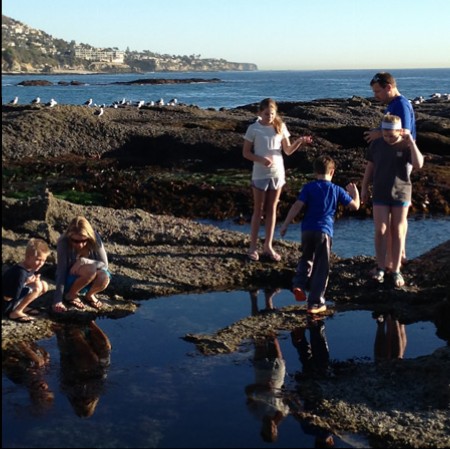
After six weeks of investigation, scientists still have yet to pinpoint the underlying cause of a disease that is killing sea stars along the West Coast and wiping out Laguna Beach’s population.
“It’s certainly into the tens of thousands and maybe in the millions,” said Pete Raimondi, chair of the ecology and evolutionary biology department at UC Santa Cruz, who is collecting data on the mysterious epidemic. Raimondi said the disease, known as wasting syndrome, is destroying every species of sea stars. “It’s that wide a target,” he said.
On a recent trip to San Diego, Raimondi said the contagion has now infected reefs at Coronado Island. “Even the one sea star we thought was pretty resistant is getting hit hard, which is the bat star,” he said. The species most predominantly affected is the sunflower star. The ochre star, a more common variety, is hit hard in some areas and not in others, he said.
Raimondi said the disease is not affecting other marine species or is it a danger to humans who go in the ocean.
The disease was first noticed last summer off Alaska. Sea star populations have now dwindled drastically along the West Coast through Southern California waters. In Laguna, the wasting syndrome is largely affecting the ochre sea star or Pisaster ochraceus. Where once hundreds of sea stars clustered along the rocky ledge south of Laguna’s Crescent Bay beach, there were none to be seen at low tide recently.
“There were easily 600 at Crescent and maybe 400 to 500 at Shaw’s and they’re all gone,” said Letty Skeen, an eight-year tide-pool educator for the Laguna Ocean Foundation, which works to protect the local marine habitat. Skeen works at the Crescent Bay tide pools nearly every Saturday.
“It’s a pathogen, which means it’s a virus or a parasite or a bacterium,” said Raimondi, who is providing data to Ian Hewson, an expert pathologist and epidemiologist in marine life and assistant professor in microbiology at New York’s Cornell University.
“What makes Ian’s work so challenging is that researchers in the field know virtually nothing about what is naturally living in and on echinoderms–which includes sea stars, sea urchins, sea cucumbers, and sea lilies–let alone anything that could cause disease within the invertebrates,” said Ellen Leventry, a spokeswoman for Cornell’s College of Agriculture and Life Sciences. “To accurately identify whether localized die-offs are related, and what might be triggering them, he must sleuth out what non-pathogenic viruses and bacteria are naturally found in the sea star and then put all the puzzle pieces together.”
Hewson is overseeing experiments at UCSC and the University of Washington to establish the cause of the disease.
While Hewson is not ready to identify the pathogen, Raimondi says water pollution and radiation from Japan’s Fukushima nuclear plant have been ruled out as potential causes.
“We see it where it’s polluted and where it’s not,” he said. “We don’t see any difference in the virulence level. We see it out at the islands. We see it in Big Sur.” Polluted waters tend to pool in certain areas and follow certain currents, affecting species in those immediate areas, he said.
Raimondi predicts the disease will advance into Baja California and even farther south.
Sea stars are known as a “keystone” species because they maintain the intertidal and subtidal ecosystem balance by keeping in check the populations of other tide-pool creatures such as urchins and mussels.
Skeen predicts the epidemic’s affect will reduce the diversity of species in tide pools, with one exception. More octopi are appearing in the tide pools more frequently, seen feeding on the decaying sea stars, Skeen said. “We were lucky to see one a month and now it’s almost every day,” she said.
She also predicts that a lack of sea stars will cause their primary food source, mussels and limpets, to proliferate. “The tide pools will become so invaded with mussels there will be no room for other animals to grow. It will throw our ecosystem out of balance,” she said.




